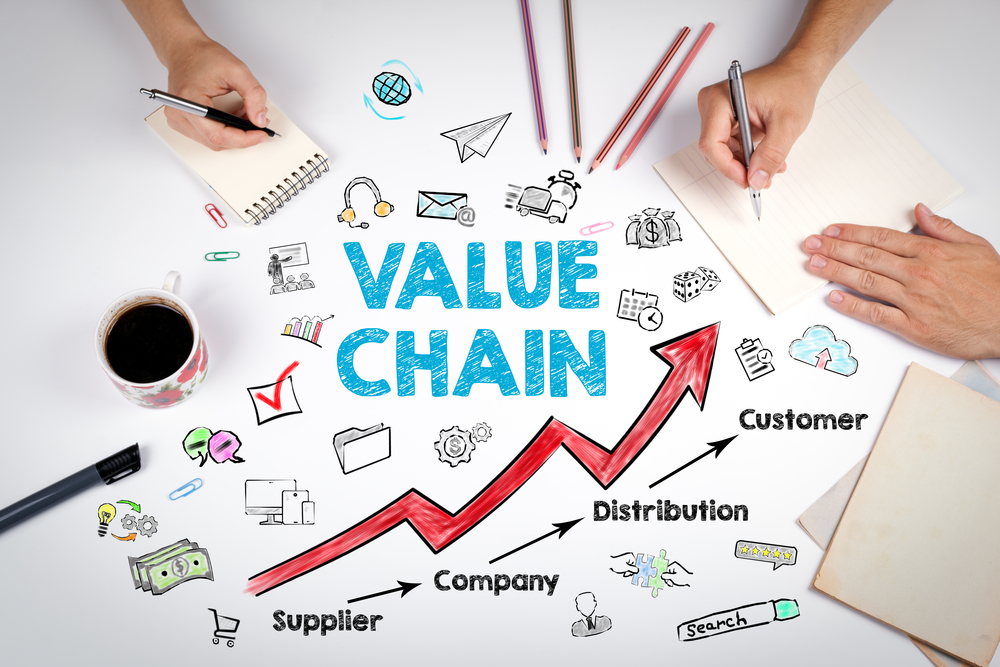
Global value chains (GVCs) refer to international production sharing, a phenomenon where production is broken into activities and tasks carried out in different countries. GVCs are highly efficient, specialised, and interconnected, but they are also highly vulnerable to global risks. The Covid-19 pandemic has been a stark demonstration of this point. The staggered shutdown and re-opening of manufacturing hubs around the world has multiplied supply chain issues. The combination of trade-policy shocks and COVID-19 has created uncertainty about the future of free trade and sparked a rethinking of global value chains.
When the COVID-19 pandemic subsides, the world will look markedly different. The supply shock that started in 2020 and the demand shock that followed as the global economy shut down exposed vulnerabilities in the production strategies and supply chains of firms everywhere. Going forth, firms will need to diversify their supplier base and look at expanding their production centres. The current events will force businesses to re-engineer their global value chains. These chains were designed to maximise efficiency and profits. And while just-in-time manufacturing may be the optimal way of producing complex products, the pandemic has exposed weaknesses inherent in a system that requires all of its parts to work together.
Global value chains will undergo a drastic transformation post-COVID-19. The change will be driven by a push for greater supply chain resilience due to COVID-19, which adds to existing pressures from the technology revolution, growing economic nationalism, and the Environmental, Social and Corporate Governance (ESG)/sustainability imperative. Firms will need to diversify their supplier base to protect against disruptions affecting a particular producer or a particular geographic location. There may be some reshoring, especially as automation has already reduced the importance of labour costs. Some sectors in the economy will be much more impacted by COVID-19 than the manufacturing industries operating in GVCs.
Governments have often played key roles in promoting GVC participation in the past decades. Governments shape key elements of GVCs through their macroeconomic policies, infrastructure building, enabling regulatory environment, and human capital development. Government policies can assist domestic firms with internationalizing and integrating into GVCs through continuous learning from engagements with foreign firms.
The COVID-19 pandemic has posed unprecedented challenges to GVCs worldwide. Global trade is projected to fall by 9.5 percent in 2020, a 10.6-percentage-point decrease from 2019. Although trade is expected to recover in 2021, the timing of this recovery depends on the duration of the outbreak and the effectiveness of policy responses to it. Foreign direct investment (FDI) has been the primary driver of GVC expansion in the past several decades. Mutually reinforcing dynamics occur between FDI and GVC participation. Trade with foreign markets could induce initial FDI from firms by lowering entry costs, firms tend to bring their suppliers with them, and a herd effect triggers more FDI inflows. FDI stimulates further GVC entry and upgrading through spill overs and cluster effects.
Various approaches that government can take to leverage foreign direct investment to integrate into global value chains by combining policy instruments are as follows:
1. Using linkages between multinational corporations and suppliers to help local firms meet global product standards.
The fastest way to integrate existing local firms into GVCs is to create pathways into international markets for them. Supplier linkages to foreign firms help local firms meet global product standards by stimulating the three L(s): linking (providing local firms with supply channels and necessary information on global standards), learning (supporting them as they train to meet those standards), and labelling (facilitating the process of certifying their ability to meet the standards).
Example – Export of food products from India to other countries. To boost value addition in agriculture and allied products and their exports, the scope of ‘Operation Green Scheme’ under Pradhan Mantri Kisan Sampada was enlarged to include 22 perishable products in Budget 2021.This will help food companies in India to form links with global food supply chains.
2. Using targeted investment promotion, incentives, and facilitation to attract global firms.
Government may also target specific global lead firms in a select GVC and use promotion efforts to attract them to the country. The government sometimes may offer these firms temporary tax incentives and firm-specific support to entice them to come. Such lead firms can help establish a new GVC cluster in the country that will help upgrade domestic suppliers and attract additional FDI over time.
Example – The Production Linked Incentive Scheme (PLI) introduced by government has been a game changer for various sectors in India especially for large-scale electronics manufacturing. The scheme proposes a financial incentive to boost domestic manufacturing and attract large investments in the electronics value chain including electronic components and semiconductor packaging.
3. Partnering with foreign firms to help expand and upgrade an existing, viable industry.
Another approach aims to expand and upgrade an existing, viable industry into a higher-value GVC segment. Local firms may seek out partnerships with foreign firms to access their technology, international brands, and managerial techniques. Multinational corporations may choose to partner with such local firms to access their complementary capacities and knowledge of the domestic market. Facilitating such collaborations (through joint ventures, franchising, or licensing) can help a country’s existing industries shift into higher-value tasks and segments within their GVCs.
Example – Multinational corporations began by offshoring basic service activities to India in the early 1990s, but now core activities have begun to move to India as well, and many of global firms now look to drive product development, research and development (R&D) and other knowledge-intensive activities in partnership with Indian companies.
Policy makers need effective strategies to preserve and improve countries’ investment climate through the COVID-19 pandemic and to expand the private sector’s role in driving productive jobs and economic transformation during the recovery. GVCs have rendered important productivity gains in the last decade. The main concern for post-COVID-19 scenarios based on the shortening of GVCs and re-shoring of activities is how to deal with a shock on productivity, while finding ways to recover from one of the biggest economic crises in history. Businesses will now focus more on re-shoring to simplify supply chains and decentralizing their manufacturing capacity by moving it closer to the markets where products will be sold.
The Covid-19 pandemic poses severe risks for India’s economy too, but it also presents opportunities for Indian domestic firms as global trade and investment landscape will be reshaped by the restructuring of global chains, build-up of new regional chains, and distributed manufacturing. Domestics firms must plan early to scale up globally, tailor business models to new markets, get to know new competitors, develop global talent, and prepare for shocks and volatility in an increasingly interconnected world economy.
Businesses that focused mainly on cost effectiveness in global supply chains now need to consider how value chains may evolve—who the participants may be, which regions could play a role, and how value could shift along the value chain. While these will present daunting challenges, they will also offer ample opportunities for Indian firms to catapult themselves into global value chains.


